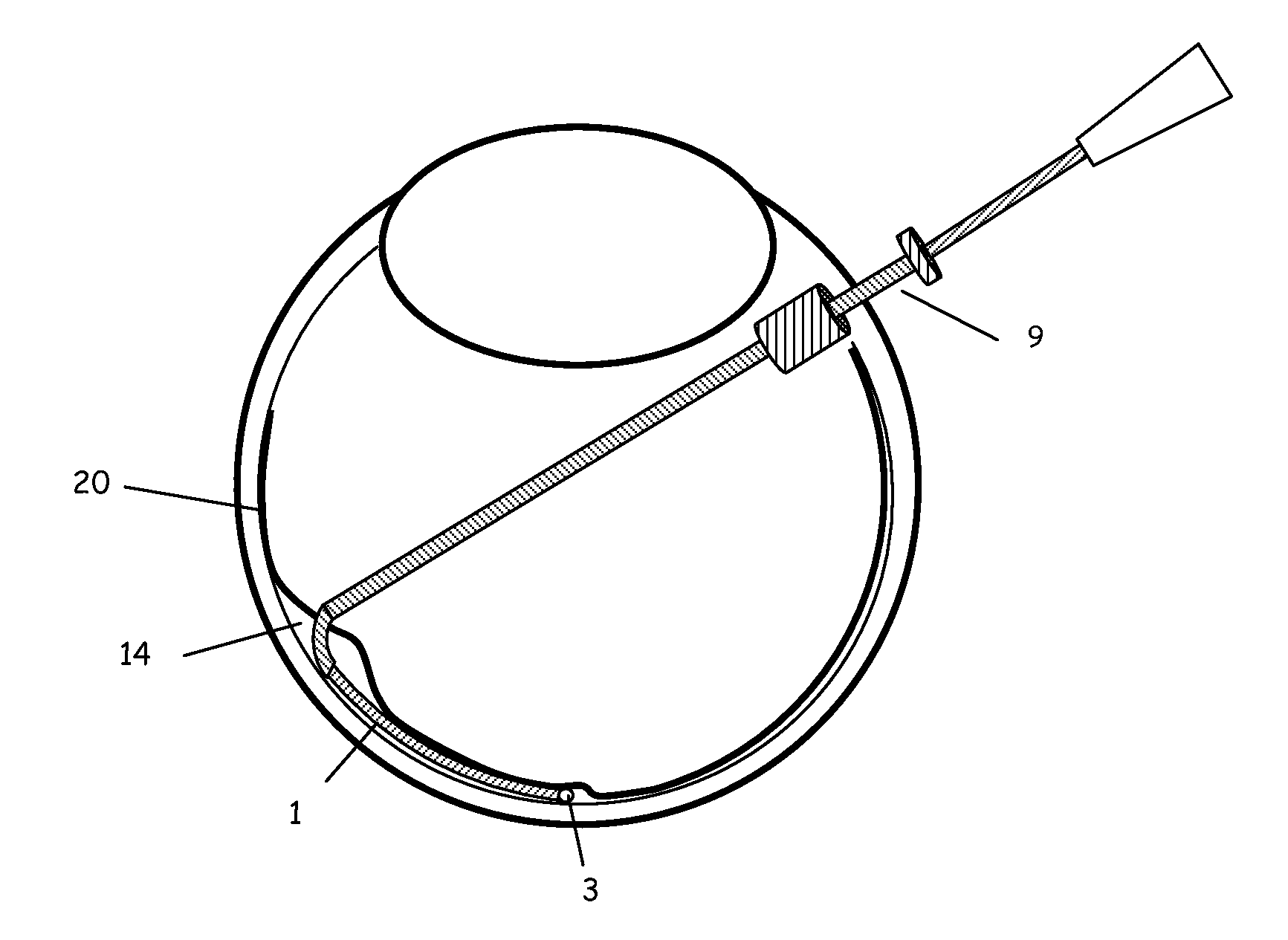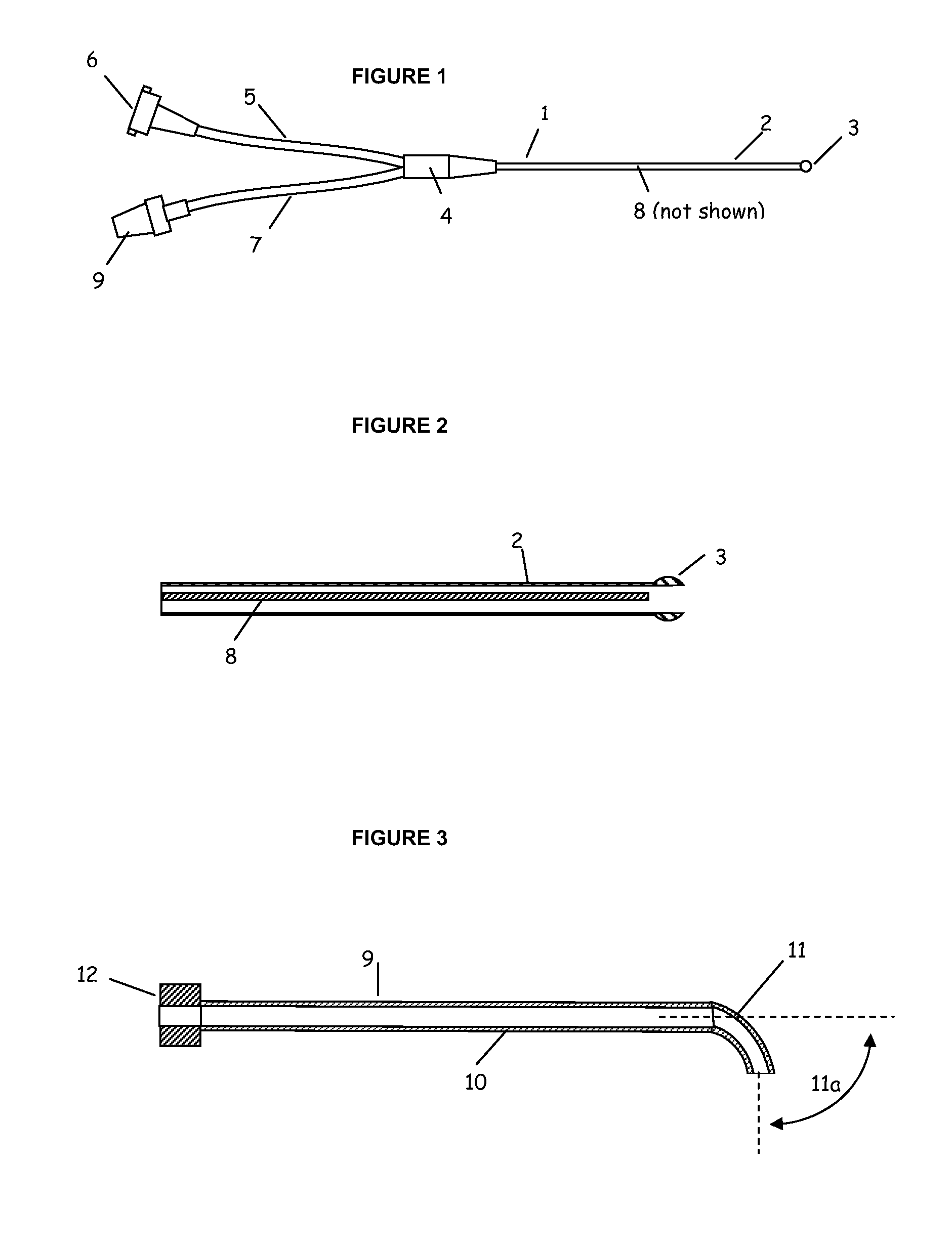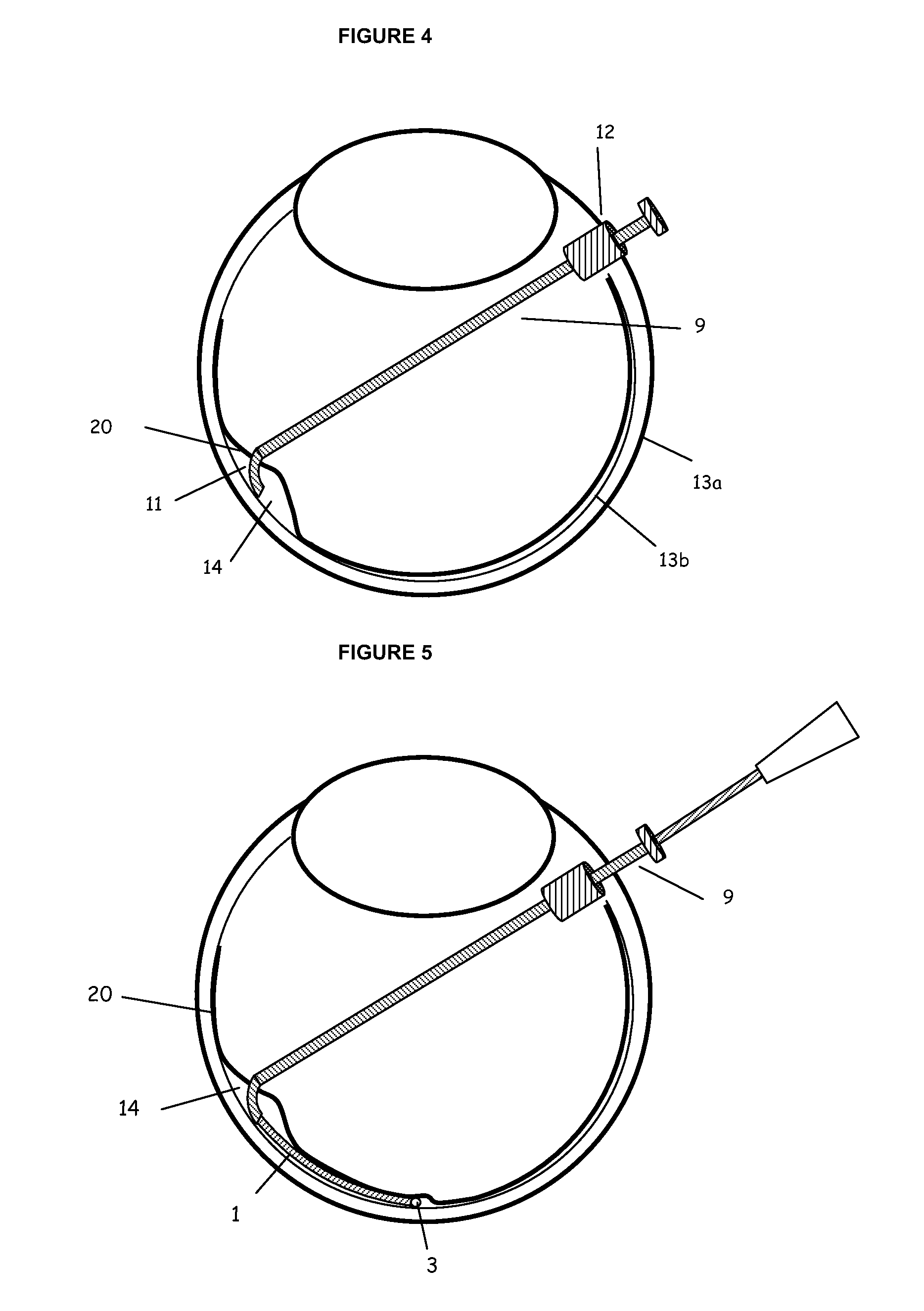Methods and apparatus for sub-retinal catheterization
a subretinal and catheterization technology, applied in the field of subretinal catheterization, can solve the problems of progressive decrease in visual acuity, eventual blindness, and difficulty in performing interventional procedures targeting tissues beneath the sensory retina
- Summary
- Abstract
- Description
- Claims
- Application Information
AI Technical Summary
Benefits of technology
Problems solved by technology
Method used
Image
Examples
example 1
[0050]Two enucleated rabbit eyes and a human cadaver eye were prepared for testing. The pars plana region of the sclera was dissected with an approximately 4 mm incision to expose the choroid. A series of rounded steel probes were used to apply pressure on the choroid and retina to determine if a particular size range of an atraumatic catheter tip would help to prevent inadvertent penetration into the posterior chamber.
[0051]Rounded steel probes with the tip diameters as shown in Table 1 were tested during dissection of the choroid to the sub-retinal space. Table 1 also shows the resultant effects observed.
TABLE 1Probe tip diameters and dissection resultsProbe tip diameterEffect on choroid and retina115 micronsEasily penetrates into posterior chamber165 micronsEasily penetrates into posterior chamber220 micronsBlunt dissects the choroid, must be carefulnot to penetrate into posterior chamber275 micronsBlunt dissects the choroid330 micronsBlunt dissects the choroid360 micronsBlunt di...
example 2
[0053]Enucleated human cadaver eyes were used to determine the mechanical properties for atraumatic advancement in the sub-retinal space. The eyes were prepared in an “open sky” approach by dissecting off the anterior segment of the globe at the level of the ciliary body, and removing the lens. In a living eye, the retinal tissues are attached to the RPE by interdigitation of the cells and the fluid pumping mechanism of the RPE. Post-mortem, the retina no longer has strong attachment to the RPE, so a method was used to maintain the positioning of the retina during the experiments. A heavy fluid, perfluoromethylcyclopentane (Flutec PC1C, F2 Chemicals LTD), with a density of 1.707 Kg / L was injected into the vitreous cavity to displace the vitreous fluid and to hold the retina in place similar to the use of heavy fluids in retinal detachment repair. A notch was cut into the globe down to the level of the anterior insertion of the retina, in order to gain direct access to the retina fro...
example 3
[0059]Enucleated human and rabbit cadaver eyes were used to evaluate catheter access to the sub-retinal space. The eyes were prepared by removing the muscles, conjunctiva, and tenons. Both ab-interno and ab-externo approaches as described herein were performed. A catheter device with distal shaft outer diameter of 200 microns and a bulbous distal tip with diameter of 275 microns was used. The distal shaft was comprised of a polyether block amide tube with a durometer of 63 Shore D (Pebax 6333, Arkema Inc). The catheter had a measured average flexural rigidity in bending of 1.49×10−10 kN*m2 and average critical load in buckling of 8.0 grams force. The distal shaft terminated proximally in a polymer hub with two proximal elements. The catheter device incorporated an 85 micron (0.003 inch) plastic optical fiber in the lumen extending to the distal tip which was connected to a 0.25 mm (0.010 inch) fiberoptic in one proximal element of the catheter. The larger fiberoptic terminated in a ...
PUM
| Property | Measurement | Unit |
|---|---|---|
| length | aaaaa | aaaaa |
| diameter | aaaaa | aaaaa |
| angle | aaaaa | aaaaa |
Abstract
Description
Claims
Application Information
 Login to View More
Login to View More - R&D
- Intellectual Property
- Life Sciences
- Materials
- Tech Scout
- Unparalleled Data Quality
- Higher Quality Content
- 60% Fewer Hallucinations
Browse by: Latest US Patents, China's latest patents, Technical Efficacy Thesaurus, Application Domain, Technology Topic, Popular Technical Reports.
© 2025 PatSnap. All rights reserved.Legal|Privacy policy|Modern Slavery Act Transparency Statement|Sitemap|About US| Contact US: help@patsnap.com



